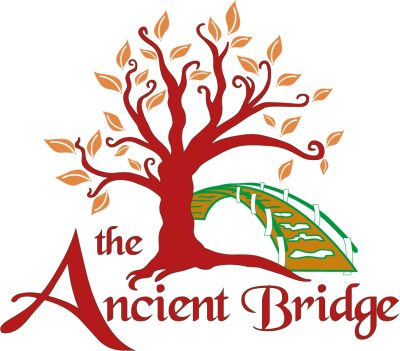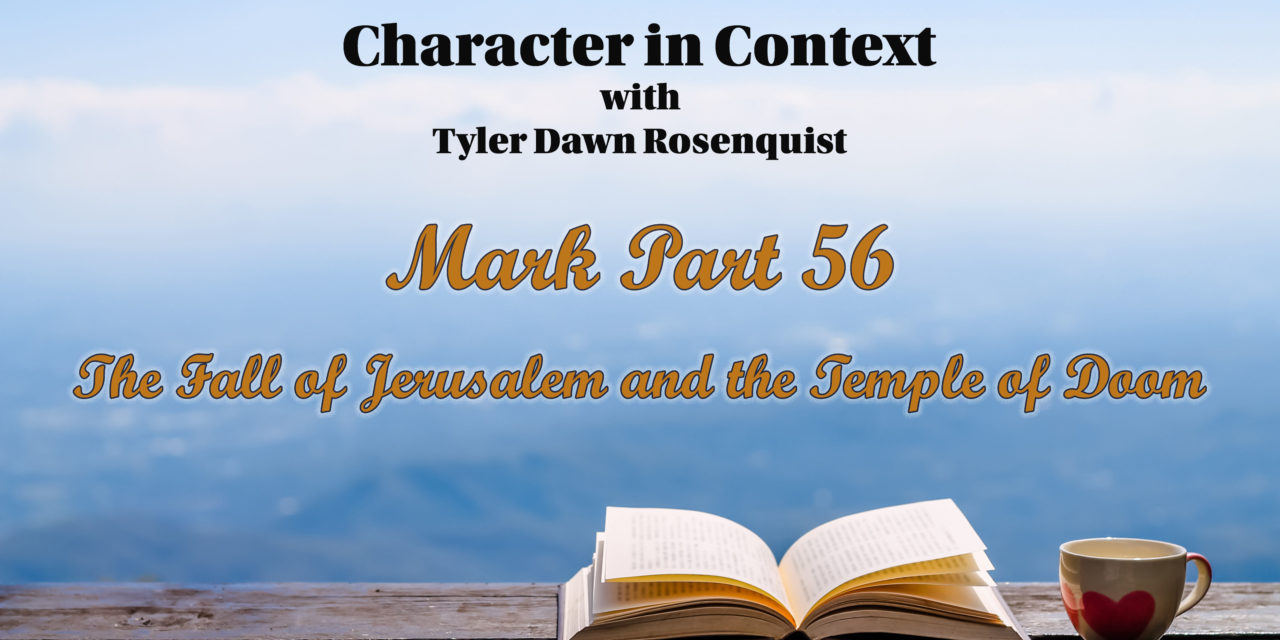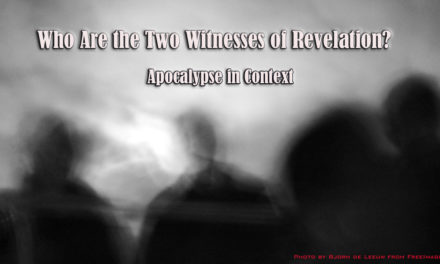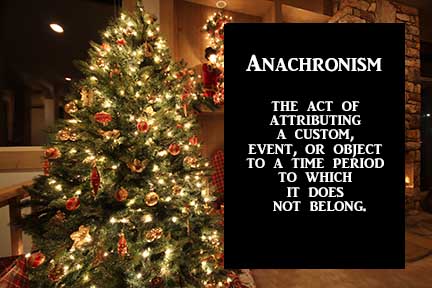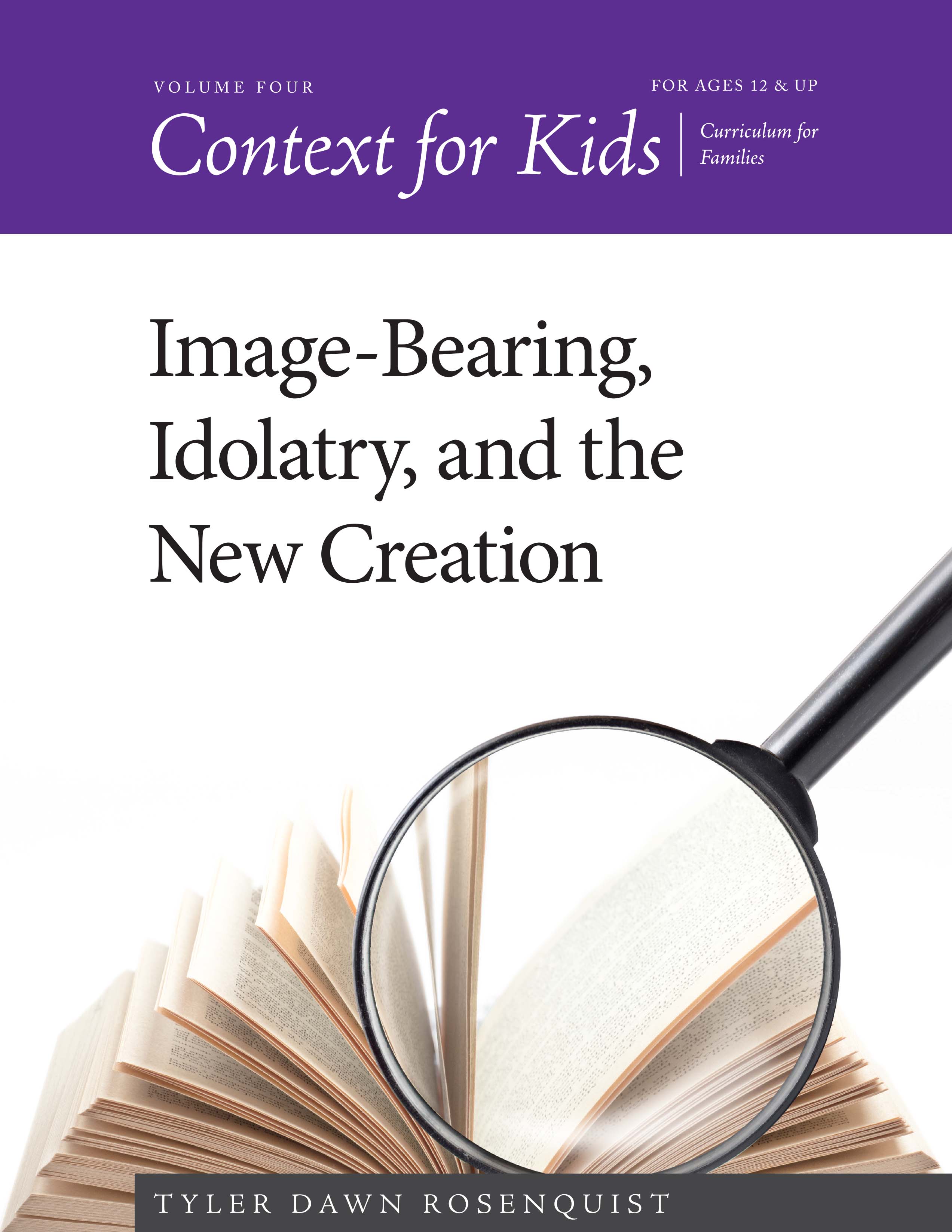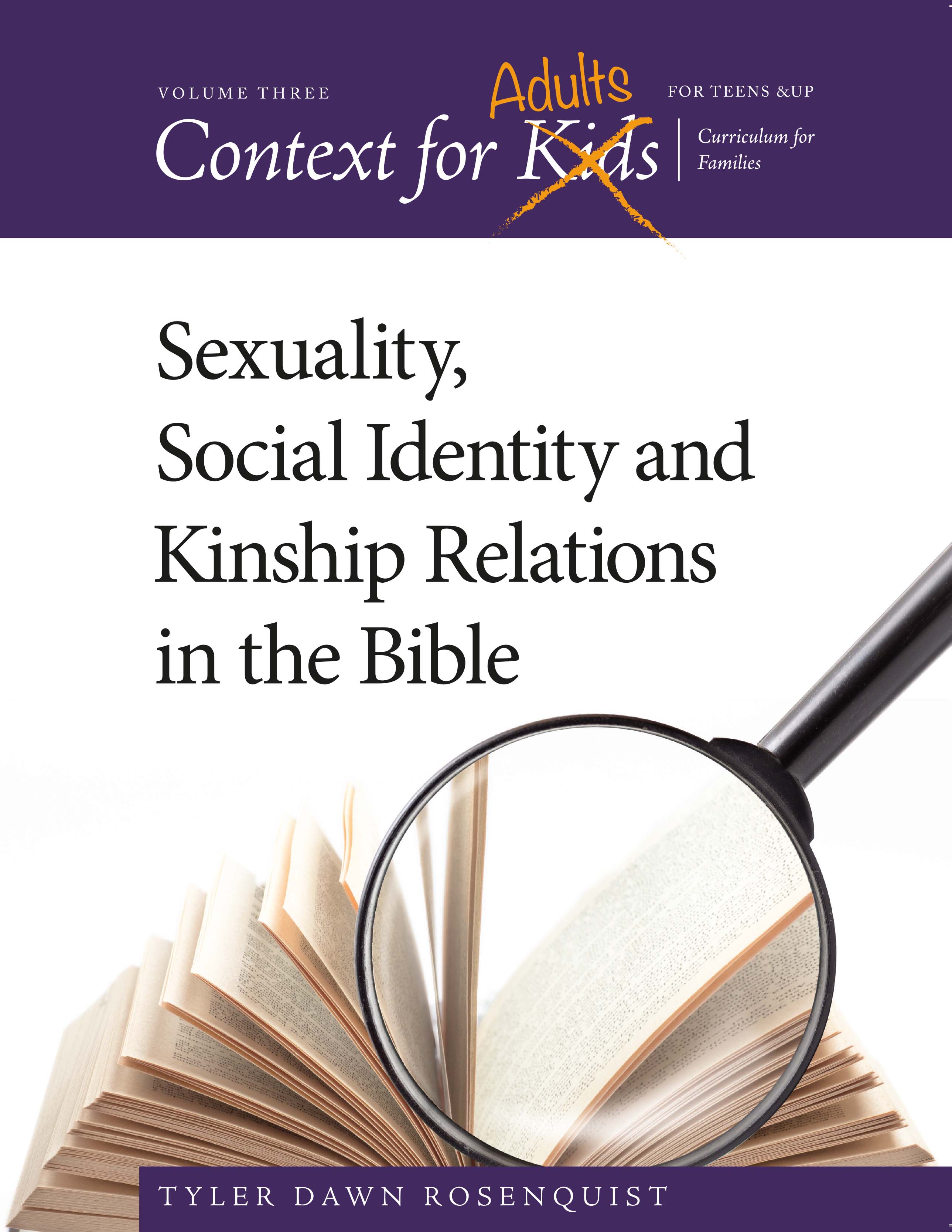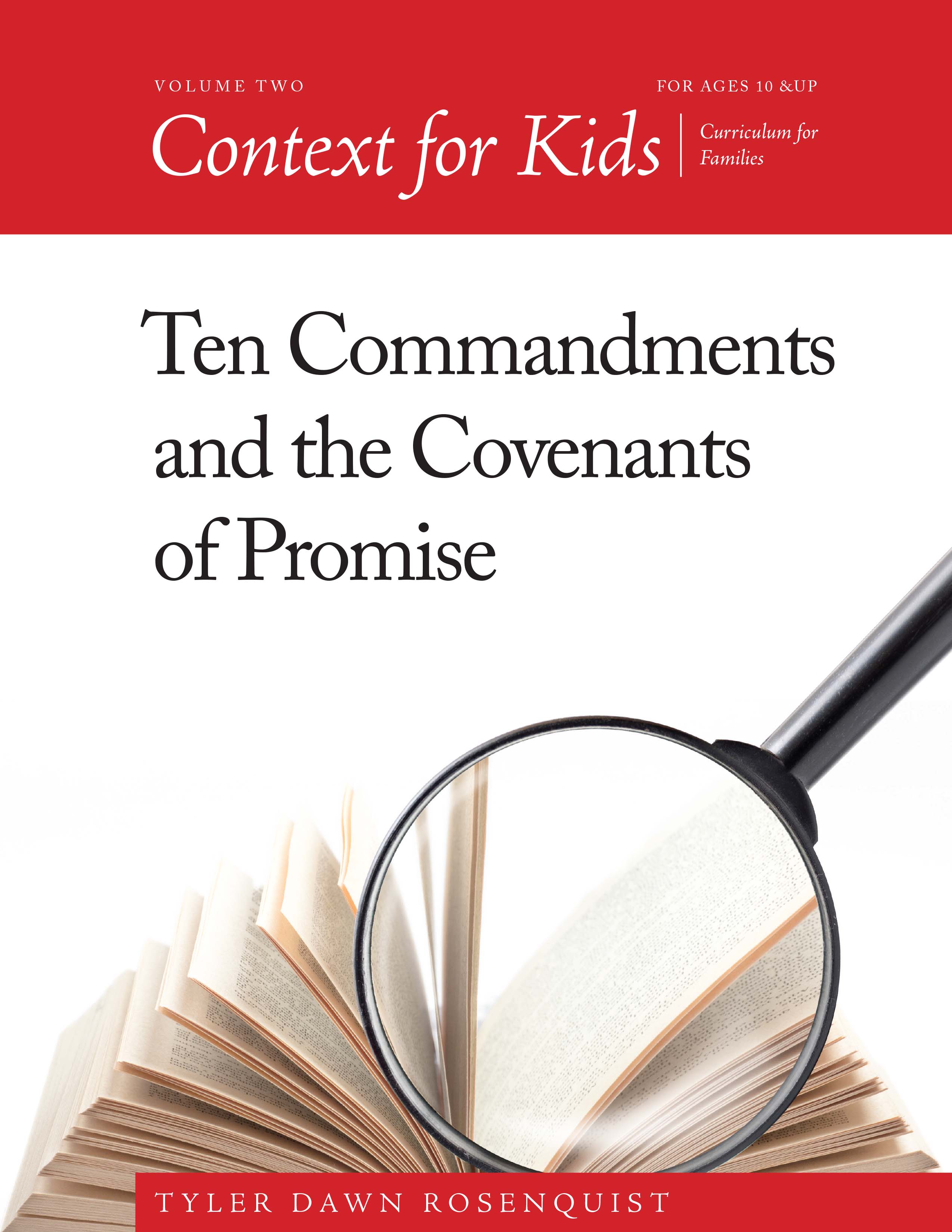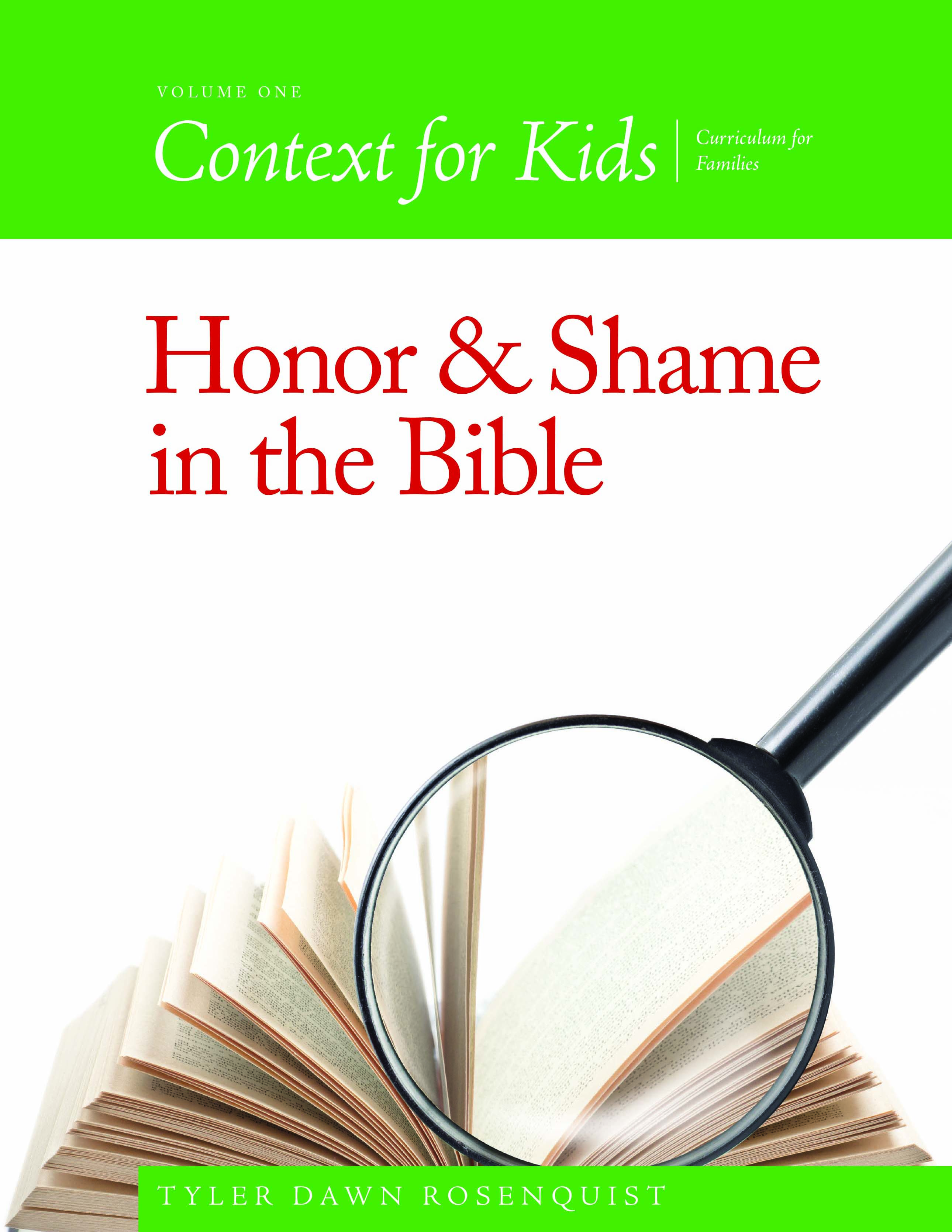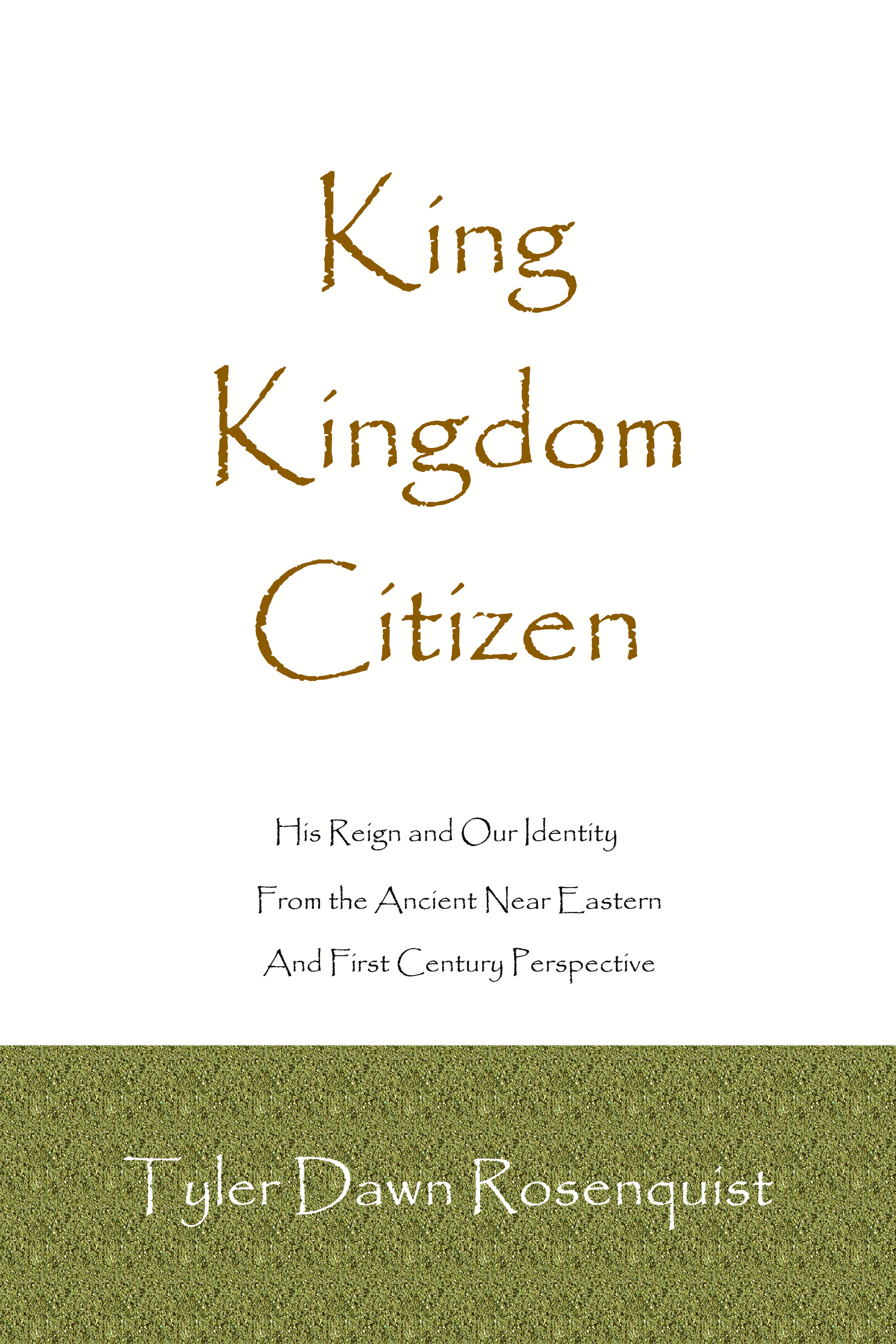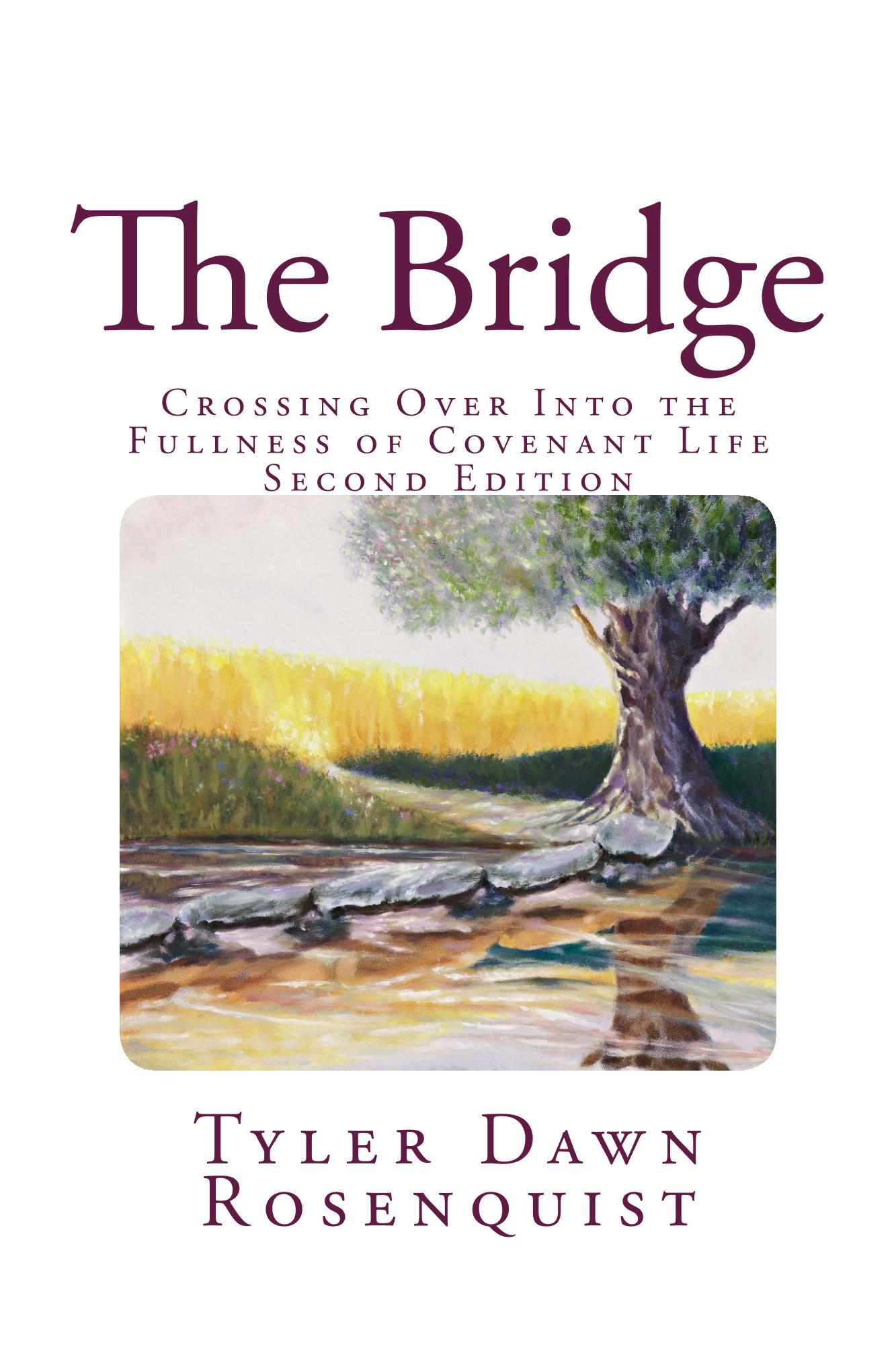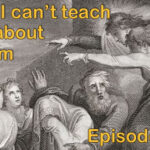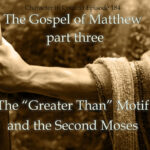The destruction of the Temple Herod rebuilt marked the end of Jewish life as they had known it. The Temple marked the center of Jewish culture, Jewish religion, Jewish worship, Jewish hopes, Jewish nationalism, and Jewish identity. To call it the end of the world as they knew it is to severely misrepresent what it was like for them. This week, we will look at the writings of Josephus, Tacitus, and other historians at the Jewish war of 66-70 CE and the destruction of the Temple by Titus in 70 CE.
If you can’t see the podcast player, click here.
13 And as he came out of the temple, one of his disciples said to him, “Look, Teacher, what wonderful stones and what wonderful buildings!” 2 And Jesus said to him, “Do you see these great buildings? There will not be left here one stone upon another that will not be thrown down.”
This is not the shortest amount of scripture we have ever tackled here—I mean, we spent two programs on Mark 1:1, right? But it is not a lot of material—or is it? Well, combined with everything that has just happened on the Temple Mount over the past two chapters, and especially the last few verses about the widow and her offering to what had become a national idol, a symbol of cultural pride and so much so that the most impoverished of worshipers were contributing to its opulence instead of eating and not only that, but they put their faith in the Temple to protect them just as they did in the days of Jeremiah—assuming that as long as the Temple stands, so will they. We’re going to talk today about what was going on with the Temple historically, with the Zealots and Rome and what ended up happening from 66-70 CE. We will also talk about when Mark was probably written, and to whom. Some of this will be review but most will be new. We’re going to talk about Josephus and Tacitus and Dio Chrysostom and possibly other first century historians.
Hi, I am Tyler Dawn Rosenquist and welcome to Character in Context, where I teach the historical and ancient sociological context of Scripture with an eye to developing the character of the Messiah. If you prefer written material, I have six years’ worth of blog at theancientbridge.com as well as my six books available on amazon—including a four-volume curriculum series dedicated to teaching Scriptural context in a way that even kids can understand it, called Context for Kids—and I have two video channels on YouTube with free Bible teachings for both adults and kids. You can find the link for those on my website. Past broadcasts of this program can be found at characterincontext.podbean.com and transcripts can be had for most broadcasts at theancientbridge.com. If you have kids, I also have a weekly broadcast where I teach them Bible context in a way that shows them why they can trust God and how He wants to have a relationship with them through the Messiah.
All Scripture this week comes courtesy of the ESV, the English Standard Version but you can follow along with whatever Bible you want. A list of my resources can be found attached to the transcript for Part two of this series at theancientbridge.com.
You know, sometimes it’s like they don’t hear a word He says…I mean, seriously, but aren’t they like us when reading the Bible? We are exactly the same. We want to smack down a fool according to his folly, as we see recommended in Proverbs 26:4, and so we ignore the very next verse telling us not to do it. The Bible is a book of wisdom often giving contradictory statements that force us to use our best judgment instead of giving us hard and fast rules. We hate that. And Yeshua/Jesus is also all about wisdom—just like we ignore the half of the wisdom in the Bible that isn’t telling us what we want to do in the heat of the moment, the disciples are ignoring that the Temple and the Temple establishment, having become corrupt (and I know of no historians or commentators, past or present, Jew or Gentile, who deny this)—well, having become corrupt, it needs to come down. Just like the flood account, just like the fall of the tabernacle/temple hybrid at Shiloh during the times of High Priest Eli and the childhood of Samuel the prophet, and the destruction of Solomon’s Temple and Jerusalem during the 6th century by the Babylonians under Nebuchadnezzar.
13 And as he came out of the temple, one of his disciples said to him, “Look, Teacher, what wonderful stones and what wonderful buildings!”
So, Yeshua has had his final dispute on the Temple Mount and He and His followers have most likely exited to the north—since they are presumably spending the night in Bethany again, and will be ending up on the Mount of Olives throughout Chapter 13. And the disciples, as usual, do not understand the prophetic actions that have occurred over the course of the last few days. Yeshua was snubbed by the leadership of both Jerusalem and the Temple when He entered the city. He came back the next day and disrupted the commerce going on in the Court of the Gentiles, which was preventing the Temple from operating as a House of Worship for all nations (He did not, however, disrupt the sacrifices, He was in the wrong courtyard for that). On the third day (as far as we know), He is relentlessly challenged by representatives of the Sanhedrin (chief priests, elders, and scribes), the Pharisees, the Herodians, and the Sadducees. After defeating them all in the various honor challenges, no one would dare speak to Him anymore and He tells a dazzling and brutally revealing parable against the leadership—aka the Parable of the Tenants and the Vineyard. After this, they are determined to kill Him at the first possible safe opportunity. And yet, as Yeshua and His followers are leaving, His mostly teenage disciples are just gawking at the Temple complex in awe like a country bumpkin seeing NYC for the first time. I can only imagine the difference between Galilean fishing villages and the Temple in Jerusalem. We’d be dumbstruck too. Even today. Even if you live in NYC or Paris.
Once again, as with the disciples’ Messianic expectations, we have a failure to understand reality. Yeshua, therefore, will give us a break in the narrative in order to talk about the reality of the future destruction of the Temple and, really, their whole world view. Within the course of a week, their lives will be turned upside down and inside out and within another forty years, the bright center of the Jewish identity and pride will be left in ruins. I cannot even begin to relate how central the Temple was to their lives and worship. We have very little to compare it to. Even 9/11 falls far short of what this meant to them. After all, most people knew next to nothing about the twin towers before 9/11 and didn’t care. Now, of course, it’s become something of a shrine but still, there is no comparison. I don’t know of anyone making a pilgrimage there on a regular basis.
2 And Jesus said to him, “Do you see these great buildings? There will not be left here one stone upon another that will not be thrown down.”
This would have been an enormous shock to the disciples—who would undoubtedly know Psalm 132 by heart: Remember, O Lord, in David’s favor, all the hardships he endured, how he swore to the Lord and vowed to the Mighty One of Jacob, “I will not enter my house or get into my bed, I will not give sleep to my eyes or slumber to my eyelids, until I find a place for the Lord, a dwelling place for the Mighty One of Jacob.” Behold, we heard of it in Ephrathah; we found it in the fields of Jaar. “Let us go to his dwelling place; let us worship at his footstool!” Arise, O Lord, and go to your resting place, you and the ark of your might. Let your priests be clothed with righteousness, and let your saints shout for joy. For the sake of your servant David, do not turn away the face of your anointed one. The Lord swore to David a sure oath from which he will not turn back: “One of the sons of your body I will set on your throne. If your sons keep my covenant and my testimonies that I shall teach them, their sons also forever shall sit on your throne.” For the Lord has chosen Zion; he has desired it for his dwelling place: “This is my resting place forever; here I will dwell, for I have desired it. I will abundantly bless her provisions; I will satisfy her poor with bread. Her priests I will clothe with salvation, and her saints will shout for joy. There I will make a horn to sprout for David; I have prepared a lamp for my anointed. His enemies I will clothe with shame, but on him his crown will shine.”
And to these followers, who no longer saw the same offenses in Israel that existed during the time of the Babylonian conquest, who knew oppression but at the same time relative peace under Roman rule—peace that came with a terrible price of course, but the Roman Emperor himself had sacrifices offered on his behalf daily at the Temple. And if the Temple were to be destroyed—what did that mean for the rest of Jerusalem that would certainly fall before that ever happened? And maybe the rest of Judea and perhaps their own homes and families in Galilee and Perea as well? And that’s only if this was at the hands of a foreign army—would this be an act of God, destroying His own Temple? One thing is for certain, Yeshua has their undivided attention—for once. Gone are all thoughts of successful armed uprisings against the Romans with Yeshua at the head of an army of the faithful. If the Temple is gone, then one way or another, probably everything else is as well. In the space of two verses, Yeshua has changed everything for them. And for Judas, this was probably the straw that broke the camel’s back.
Now, if you want to get a general idea about the size of the buildings, I recommend checking out Mishnah Tractate Middot—which was actually written by a first century priest. Make sure you read a commentary version because without a commentary, well, it just makes very little sense. Kehati, Artscroll, and JPS (the Jewish Publication Society) all have great commentaries. I personally own the complete Kehati commentary. Josephus, the historian from whom we get most of our information, was also a priest who served in the Temple. The Temple was immense—far bigger than the people who want to promote the idea that the Temple was down in the City of David would have you believe (which Josephus’s account in Wars 5.5.1-6 makes impossible to believe anyway). It was like a massive city in and of itself, and in fact made up about a sixth of the area of the city with its own somewhat independent government and infrastructure. With the dimensions recorded in Middot, a city of David based location would end us up with a 6” cubit instead of the standard 18” cubit of Scripture and the royal cubit of almost 22” that we find represented by the outline of the original Temple Mount still visible up on the Temple Mount platform.
Tacitus, a first/second century Roman historian, speaks of the layout of first-century Jerusalem in his Histories V.8: “A great part of Judæa consists of scattered villages. They have also towns. Jerusalem is the capital. There stood a temple of immense wealth. First came the city with its fortifications, then the royal palace, then, within the innermost defences, the temple itself. Only the Jew might approach the gates; all but priests were forbidden to pass the threshold.” This certainly does not describe a City of David locale for the Temple but instead a central location at the center of the defenses, at the highest point—which is always where you put temples. Wars is also very clear that the Fortress Antonia actually enjoined the Temple complex at the NE corner (see Wars 5.5.1-6 for detailed descriptions).
The buildings were enormous. And gorgeous. In the Talmud—Baba Batra 4a says, “He who has not seen Herod’s building, has never in his life seen a truly grand building.” And Josephus said, “Viewed from without, the Sanctuary had everything that could amaze either mind or eyes. Overlaid all round with stout plates of gold, the first rays of the sun it reflected so fierce a blaze of fire that those who endeavored to look at it were forced to turn away as if they had looked straight at the sun. To strangers as they approached it seemed in the distance like a mountain covered with snow; for any part not covered with gold was dazzling white…” (JW, 5.222/5.5.6)
The stones were enormous, and anyone who has seen the Master Course in the Western Wall tunnels can verify it “Now the temple was built of stones that were white and strong, and each of their length was twenty-five cubits, their height was eight, and their breadth about twelve…” (Ant 15.11.3) and the Master Course stone itself measures 44 feet long, 11.5 feet high, and 15 feet wide and is estimated to weigh 570-630 tons. Obviously, no one is going to be weighing it anytime soon. Yeshua made the interesting claim that none of the stones of the Temple complex would be left standing, and that ended up being true for various reasons.
Mark Chapters 11 and 12 represent the coming of the Lord to His Temple as prophesied in Malachi 3:1-2, at which time the elders, priests and scribes had a choice to either accept or reject him and with one notable exception of a scribe, they categorically snubbed and rejected Him. So, He did not purify the sons of Levi at that time, so that they could make offerings in righteousness. Prophecies are often conditional. Yeshua leaves the Temple, never to return and next week we will see Him depart to the Mt of Olives to give the Olivet Discourse but right here we have the verdict of the Covenant Lawsuit of Yahweh against the Temple and the leadership of Israel—not the Jews. The leaders. Historically that has been one huge, tragic, blunder—laying the rejection of the Messiah on the entire nation.
What’s a Covenant lawsuit? I talk about that more in my curriculum book The Ten Commandments and the Covenants of Promise but I will just briefly sum it up here. Covenants have conditions and when those conditions have been violated, the giver of the covenant or the betrayed covenant partner can enact a lawsuit against the violators. The prophets were constantly speaking in this sort of language before and after the Babylonian exile and even during. Like I always say about Isaiah 1-39, “You had better behave or else the verdict in Yahweh’s lawsuit against you is coming and you won’t like it.” And then the rest is, like, “okay so now you are suffering the consequences of the verdict against you so it’s time to straighten up and fly right.” Isaiah 1-39, “dudes, you’re gonna end up in jail if you don’t cut it out.” Rest of Isaiah, “Now, let’s talk about your parole hearing coming up.” Okay, maybe that goes too far but the point I am making is that this is legal language and Yeshua is delivering a verdict as a judge. The whole coming into Jerusalem wasn’t just for the Passover. The Passover simply dictated the timing, not the verdict itself. The verdict was about what happened when the chosen King of Israel entered Jerusalem after His triumphant defeat of demons, sickness, death, physical disability, and nature itself —proving His authority as Yahweh’s Covenant mediator, the arm of the Lord, and the promised Yahweh-Warrior. He was rejected by the very people who should have welcomed Him at His arrival, and when they did not, He went into the Temple but did not perform the sacrifices that normally would have accompanied a triumph. That was the first rejection of the Temple’s functionality. Then, the next day, He cast out the money changers and dove-sellers who were disrupting the functionality of the Temple which was supposed to be a “House of Prayer for all Nations” (Isaiah 56:7). That was the second rejection of the Temple’s intended functionality. Then after all the challenges, Yeshua condemns the priestly elites as murderous traitors. And this was the third rejection.
What does that mean? That the Temple was never a good thing? No, not at all. Yahweh commanded the building of the Tabernacle so that He could be present among His people with the priesthood as mediators. Yahweh gave David all of the directions for the building of the first Temple in Jerusalem, as we see in I Chron 28:19 “All this he made clear to me in writing from the hand of the Lord, all the work to be done according to the plan.” When that Temple was destroyed because it had been too badly contaminated by idolatry and bloodshed, Haggai and Zerubbabel were commanded to rebuild it, and Yahweh says they flat out will not be blessed until they do, in Haggai 1:8 “Go up to the hills and bring wood and build the house, that I may take pleasure in it and that I may be glorified, says the Lord.” So, the Temple was never anything that Yahweh hated, just what was done with it. The Tabernacle and the Temple were originally expressions of intimacy. Of course, as we see in Ezekiel 11:23, the presence of Yahweh left the Temple before it’s destruction, leaving for the Mount of Olives, and never once rested upon the Second Temple. Yeshua is about to do the same thing. He’s already left the Temple, and in the next verse we will see Him sitting on the Mount of Olives. The Spirit of Yahweh has departed the Temple once more. For the last time. Yeshua, who over the last two chapters has functionally replaced the Temple as the location of God’s presence on earth, is now formally condemning it. It will be destroyed, and not one stone would be left standing upon another. And for that matter, very little of Jerusalem in general would not be destroyed, according to Josephus. What is not toppled will largely be burned or covered in rubble—and we can still see the scorch marks today from the devastation of the fires set by the armies of Titus.
Because this is the verdict of a Covenant lawsuit, there is no pleading for a reprieve. There is nothing in there about Yeshua going through the Temple preaching destruction in forty years the way Jonah preached the destruction of Ninevah in forty days. Why not? Why is this message only given to His most intimate followers? Because it is a final verdict and not a warning. There will be no chance for repentance and, in fact, we have seen this theme repeatedly throughout the Gospel. In Mark 4 with the giving of the Parable of the Sower, Yeshua explains to His disciples that He speaks in parables for the same reason that Isaiah was commanded to preach, so that they would hear but not understand and see but not perceive. The time for the wooing of the leadership to repentance was over. Yeshua was and is the final word of the Covenant, the definitive interpreter of the Torah. He didn’t come to talk them into repenting. He came to fight Satan and his demons, to overcome sickness and disability, to show His authority, and to observe and judge and to save His people. He came to His own, as the verse goes, and they received Him not. The leadership didn’t recognize the hour of their visitation because of corruption—and especially in the priestly elites.
How do we know this is a final verdict? Because Yeshua presents it as a done deal and not a threat. And they took Him seriously enough that their very first question after He speaks is to ask when it will happen. Not why, they don’t do that. They don’t beg Him to relent. For some reason, one that is not explained, they are taking Him absolutely seriously and they aren’t missing the point of what He is saying. He just told them that the center of their world is going to crumble and all they can think to ask is when. And He doesn’t give them a definitive date, which is undoubtedly what they want. However, the Gospel of Mark was written before the fall of Jerusalem and the destruction of the Temple. It was written to an audience based in Rome, far from the Temple and whose believing population (both Jew and Gentile) had likely never seen it. The Temple in Jerusalem was one of the architectural wonders of the ancient world and the destruction of any temple was big news whether you worshipped the god in question or not. The lack of specific details really lends to the credibility of the account and the early date of it. Certainly, if this was written post 70 CE, there would have been a mention of the fires, which burned so hot as to reduce much of the limestone to powder and were much worse than anything else. So, even those Biblical scholars who debate everything else and whether or not Yeshua really said it, this is always credited directly to Yeshua and timed before the fall of Jerusalem.
However, as is Biblically typical, it would take a generation for it to happen. The barren fig tree was being cursed, and indeed the Mt of Olives would be deforested of both olive and pine trees during the siege, the Temple Mount was going to be proverbially cast into the Sea. And I am going to tell you that, years ago when I was heavy into Temple study, I wanted to see the rebuilding of the Temple but not anymore. Yeshua is the final eschatological Temple and we do not need one built by human hands—even though the others were commanded by God and built with human hands. Yeshua is a building of Yahweh’s own design and creation. Nowhere is the literal building of a new Temple anywhere commanded. Yeshua is my Temple, my mediator, my High Priest, my access, my everything I need to approach Yahweh. He is superior to anything we could ever fashion. He replaced the functionality of the Temple as the center of our worship, focus, and mediation between God and man. To attempt to replace Him with a building is not something that is needed. The time of blessing emanating from the Temple Mount is over and blessing now emanates from Yeshua and, by extension, through His people.
The first Tabernacle/Temple hybrid at Shiloh was destroyed because of the gross sin of the sons of Eli in encroaching upon what belongs only to Yahweh in taking the fat portions for themselves and refusing to eat as He commanded, and due to sexual sin with women who would come to sacrifice, and for the sin of carrying the ark into battle presumptuously. Solomon’s Temple was destroyed because of rampant idolatry and oppression. The Second Temple was destroyed because of oppression, collaboration with the Romans, greed among the priesthood, turning the Temple into an idol, murder, encroachment, and the rejection of their divine visitation.
There were a lot of events leading up to the beginning of the end in 66 CE. It was a time of rising tensions between the Jews and the Romans. Caligula (linked article) actually ordered an image of himself erected within the Temple in Jerusalem in 40 CE. And not just in the Temple but actually in the Holy of Holies. To put this in perspective—there was nothing in the Holy of Holies during Second temple times, being that the Ark of the Covenant was lost during or before the destruction of the First Temple by the Babylonians. Having already declared himself Jupiter incarnate, Caligula was determined to bring the Jews (who were traditionally and otherwise legally exempted from Imperial Cult worship) into line finally. The Jews were so distraught that they left their fields during planting season in order to petition the new governor of Syria, Publius Petronius, not to go forward with the plans. Fortunately, Petronius was no fan of the plan and managed to delay long enough for Caligula to be murdered.
Caligula’s replacement, Claudius, at some point during his reign, either formally expelled the Jews from Rome or simply forbade them to meet together, resulting in their leaving Rome en masse. Nero, of course, is famous for his persecution of Christians—who were a Jewish sect at that point in history. So, there was never any love lost between the groups but conditions within Judea, Galilee and thereabouts had always been difficult and especially with the animosity that was a perennial problem between the Jews and the prefects and procurators and governors who would often create crises just for the sport of it—as when Pontius Pilate moved idolatrous Roman standards into the city of Jerusalem under the cover of night. Rome was all about power and order—their power and their order. Coexistence was always tenuous at best and various groups handled Roman authority in different ways. The Sadducean High priestly family and their cronies collaborated with Rome and grew rich in the procees. The Pharisees adopted more of a live and let live mentality and as long as the officials didn’t do anything they considered to encroach upon their religious life and the sanctity of Jerusalem and the Temple precincts, they mostly just ignored the Romans. The Qumran sect retreated into the wilderness at some point and avoided the Romans altogether. The normal populace just tried to stay out of the way of Rome as they were too busy just trying to survive. But there was one group determined to get back to the good old days—you know, Hasmonean times when Jews were at one another’s throats and even crucifying and otherwise slaughtering each other in power struggles but hey, at least they were ruled by other Jews. This sect was called the Zealots. They were for the return of autonomous self-rule and severely disagreed with the Pharisees, who felt that foreign rule was something only Yahweh had the authority to end, through the Messiah. They saw this as punishment for sins. The Zealots, on the other hand, believed that faith was best exhibited by popular uprising to enact a renewed Kingdom. And before they were done, more Jews would be dead by their efforts under the leadership of the various rival factions among the zealots than by those of the Romans.
Now, Yeshua was not the only one preaching the destruction of the Temple before 70 CE. We also have the testimony of Yoma 39b: The Sages taught: During the tenure of Shimon HaTzaddik, the lot for God always arose in the High Priest’s right hand; after his death, it occurred only occasionally; but during the forty years prior to the destruction of the Second Temple, the lot for God did not arise in the High Priest’s right hand at all. So too, the strip of crimson wool that was tied to the head of the goat that was sent to Azazel did not turn white, and the westernmost lamp of the candelabrum did not burn continually. And the doors of the Sanctuary opened by themselves as a sign that they would soon be opened by enemies, until Rabban Yoḥanan ben Zakkai scolded them. He said to the Sanctuary: Sanctuary, Sanctuary, why do you frighten yourself with these signs? I know about you that you will ultimately be destroyed, and Zechariah, son of Ido, has already prophesied concerning you: “Open your doors, O Lebanon, that the fire may devour your cedars” (Zechariah 11:1), Lebanon being an appellation for the Temple.
Josephus’s Wars 6.5.3 talks about the phenomenon of the Temple door coming open as well but he also speaks of a prophet named Jesus who prophesied against the city and Temple beginning around 62 CE: “there was one Jesus, the son of Ananus, a plebeian and a husbandman, who, four years before the war began, and at a time when the city was in very great peace and prosperity, came to that feast whereon it is our custom for every one to make tabernacles to God in the temple, began on a sudden to cry aloud, “A voice from the east, a voice from the west, a voice from the four winds, a voice against Jerusalem and the holy house, a voice against the bridegrooms and the brides, and a voice against this whole people!”
The beginning of the revolt was like a perfect storm situation. In Caesarea, some Greeks sacrificed birds in front of a local synagogue, and in retribution, Eleazar ben Hanania put an end to the prayers and sacrifices in the Temple on behalf of the emperor—which was one of the only reasons they were even exempted from Imperial Cult worship in the first place. This was a huge deal. Bandits began attacking Romans and there were taxation protests. The Temple was invaded by Roman soldiers under the orders of the procurator and after that, there was nothing that could really stop what occurred over the next four years. To call it a war of the Jews vs the Romans would be inaccurate, as it was a war of Jews vs Jews as well. The rebels were ruthless toward any Jews that they considered to be either collaborators or simply not on their side of the war. This was not simply a war that took place in and around Jerusalem but also involved the rest of Judea. Those who could, fled to the Galilee and other regions in order to escape slaughter at the hands of the Zealots and the Romans.
Now, Yeshua is going to talk about destruction on such massive levels that there are many who assume He could not be talking about Jerusalem and the temple, but that would be to ignore His immediate audience (which would not be us) and what happened during the Great Revolt meant to the Jewish people. When destruction is happening to you, to your capital city, to your Temple, to your people—it is the end of the world. It is more horrible than anything that has ever happened before or will happen again. It doesn’t matter to them that it is only one small city and the Temple in that city. Religiously, spiritually, nationally, etc. there was no city on earth except for Jerusalem and there was no Temple except in Jerusalem and there was no destruction that mattered except that which came upon Jerusalem that ended up being so complete that we are still digging up the ruins and the Temple has never been rebuilt. 1951 years now and it is still and has remained very much a city under siege and subject to violence. It never really ended. So, when Yeshua talks about the destruction being unparalleled and never to be rivaled again, I think we have to take into account that it is still ongoing.
Josephus talks about the horrors of the war—about cannibalism, although that might be legendary material. We have to remember, when reading Josephus that although he was there in person and witnessed all of this, that he was caught between a rock and a hard place. He was initially siding with the rebels but he had to surrender in 67 CE and ended up a slave to future emperor Vespasian, only to be freed in 69 CE and ended up part of the household as a Roman citizen. So, when he wrote Antiquities and Wars, he was writing under the patronage of the Flavian dynasty. So, what he wrote sort of had to walk a fine line between not condemning the Jewish people too much while at the same time celebrating his patrons. I am going to skip a lot of the actual details of the four-year siege because we will be covering some of it in the upcoming weeks but I do want to talk about some things.
Titus had not originally wanted so much destruction but the rebels left him with little choice. No religious Roman man relished the thought of destroying any temple. Unwilling to yield or surrender and actually spurred on by false prophets who were promising a number of things—some were claiming that Yahweh would destroy the Roman armies at any moment and that the faithful would be rewarded, and so there were people who, instead of fleeing from the city once the armies arrived, actually fled into the temple precincts—the scene within the Temple precincts was a nightmare. Christians, of course, according to Eusebius, had fled much earlier to Pella (Church History 3.5)
The Jews resisted [Titus] with more ardor than ever, as if it were a kind of windfall [an unexpected piece of luck] to fall fighting against a foe far outnumbering them; they were not overcome until a part of the Temple had caught fire. Then some impaled themselves voluntarily on the swords of the Romans, others slew each other, others did away with themselves or leaped into the flames. They all believed, especially the last, that it was not a disaster but victory, salvation, and happiness to perish together with the Temple (Dio Chrysostom, Orations 66.6-2-3)
Josephus claims that 97,000 Jews were taken as slaves after the revolt and that 1.1 million were killed. Now, Josephus is notorious for grossly inflating numbers but this gives us an idea of how this looked at the time, that the destruction and loss of life was just beyond catastrophic.
Let’s talk right now about Yeshua’s claim that not one stone would be left standing on any other because there is a prophecy in Zechariah that is very important and easily overlooked. Zerubbabel is of course called the signet ring of the Lord in Haggai 2. In Zech 4:6-10, an angel speaks to him, saying, “This is the word of the Lord to Zerubbabel: Not by might, nor by power, but by my Spirit, says the Lord of hosts. Who are you, O great mountain? Before Zerubbabel you shall become a plain. And he shall bring forward the top stone amid shouts of ‘Grace, grace to it!’” Then the word of the Lord came to me, saying, “The hands of Zerubbabel have laid the foundation of this house; his hands shall also complete it. Then you will know that the Lord of hosts has sent me to you. For whoever has despised the day of small things shall rejoice, and shall see the plumb line in the hand of Zerubbabel.”
There are scholars who see here a prophecy that the Temple Mount would again in the future become a plain, completely desolate of buildings, preparing the way for the eschatological Temple, the top stone—leaving no Temple in the world save Yeshua Himself. And so, Yeshua, in proclaiming that there would be no stone left upon another, was actively declaring His replacement of the Temple as the center of true Jewish life, nationality and worship. Something to think about. Certainly, it would not be the only Scripture in the prophets to have immediate and fuller future fulfillment in Yeshua.
Now, although Titus levelled the Temple Mount, he did not level all of Jerusalem. He left the entirety of the three towers built by Herod and the westernmost wall of the city for his soldiers to find shelter behind. The only reason any part was left standing was because Titus wanted to prove how great a city he had destroyed (Wars 7.1.1). You do not waste four years of a Roman army’s time, plus their lives, plus the resources, and have your city remain standing at the end. Mark up the final level of destruction to anger, frustration, vengeance and the Romans making an example of the pride and joy of Jewish religion and nationalistic hopes. And this should have been the end of such things, from the Roman point of view, but two more rebellions would follow. Now, what is not true is the old urban legend that the armies destroyed the Temple because they were trying to get every last bit of the gold that had melted between the stones. Although some claim the story comes from Josephus, it doesn’t. Just one more urban legend. Sounds good, but then don’t they all? Otherwise, who would pass them on?
